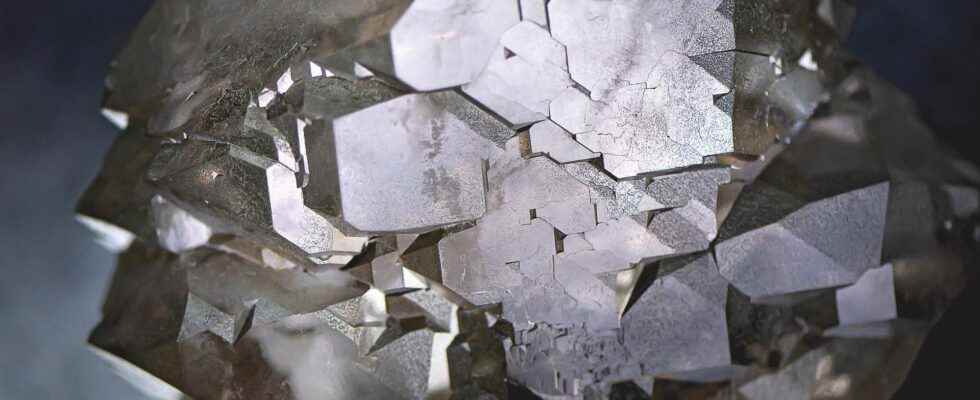This is an unusual study that just came out in the journal American Mineralogist. Researchers have looked into the minerals present on Earth, with the aim of listing all the existing types and how they were formed. The end result: a database over 10,500 combinations ofspecies minerals and formation processes, with more than 6,000 minerals and 57 different processes. Among them, more than 250 minerals which would date from before the Earth and come directly from meteoritesso fragments ofasteroids. “No one has undertaken this enormous task beforesaid Dr. Robert M. Hazen, first author of the study and researcher within the Earth and Planets Laboratoryin the city of Washington. Each mineral specimen has a story. Each tells a story. Each is a time capsule that reveals Earth’s past like nothing else can. »
Life at the heart of minerals
It was after 15 years of research that the researchers managed to obtain such a result. For this, they used pre-existing open-access mineral databases, combined with thousands of mineralogy articles and research. From all this information, they have created a gigantic database, the most complete ever obtained, which for the first time takes into account each training process for each known mineral. Of all the information they gleaned from it, the importance of water is at the top. Indeed, for 80% of mineral species, water played an essential role. “This work fundamentally changes our view of the diversity of minerals on the planet, said Dr. Hazen. For example, more than 80% of the minerals on Earth were carried by water, which is therefore fundamentally important for the mineral diversity of this planet. By extension, this explains one of the main reasons why the Moon and Mercury and even Mars have far fewer mineral species than Earth. »
In addition, the study demonstrates the importance, beyond water, of life: for approximately 50% of minerals, biology has played a direct or indirect role in their formation. And for 1,900 species, or almost a third, the mineral was formed exclusively through biological processes! “The work also tells us something very profound about the role of biologyadded Dr. Hazen. A third of the Earth’s minerals could not have formed without biology: shells, bones and teeth, or germs, for example, or the indirect but vital role of biology, such as the creation of an oxygen-rich atmosphere that led to 2,000 minerals that would not have formed otherwise. »
An eye on Earth’s history
As the study explains, the Earth’s minerals are ultimately markers of the life it contains. Most of them were also formed during the emergence of life, during the first 250 million years of our Planet, like tiny crystals of 4.4 billion year old zircon. These are the oldest minerals created on Earth. But others are even older: 296 minerals have been recognized as being “pre-Earth”, some of which would be more than 7 billion years old, therefore several billion years older than the Solar system.
Finally, the researchers explain in their study that it all started with chemical elements relatively abundant, such ashydrogenthe carbonoxygen, or magnesium. They specify that the “significant mineral diversification then occurred via two main processes, first by the gradual selection and concentration of rarer elements through fluid-rock interactions, then by processes of erosion andoxidation close to the surface biologically induced”. Then the arrival of human beings, or rather the industrial revolution from 1800, contributed in turn: more than 600 identified minerals come fromhuman activities, including more than 500 from mining. Finally, of these, 234 come exclusively from mine fires. coal.
Eventually, the researchers hope to trace themore detailed history of the Earth, especially from its beginnings, thanks to this gigantic new database. In particular the geological history: each mineral found is an indicator of the physico-chemical conditions that prevailed where it was created. “Hazen and Morrison’s remarkable work offers a potential way to predictably discover possible minerals in nature. Minerals may be essential for reconstructing all past life and predicting future life on Earth,” and understanding the evolution of minerals will provide us with a new avenue for exploring deep space and searching for extraterrestrial life and habitable planets.” , enthused Anhua Lu, president of the International Mineralogy Association (IMA).
Reading ideas for the summer with Futura?
To celebrate the start of the holidays, we offer you the Mag Futura at the preferential price of 15 € instead of 19 €, i.e. a reduction of 20% !
What is Mag Futura?
- Our first paper journal of more than 200 pages to make science accessible to as many people as possible
- 4 major scientific questions for 2022, from the Earth to the Moon
- Home delivery*
*Special offer valid until July 19. Delivery is made in France (excluding metropolitan France), Switzerland, Belgium.
Interested in what you just read?
